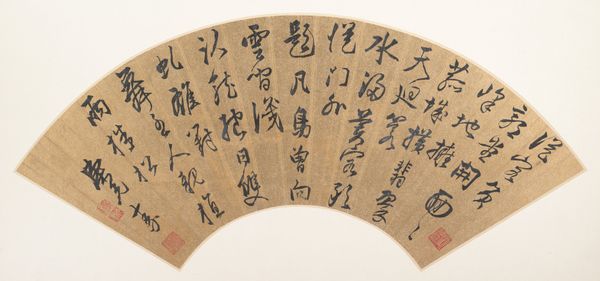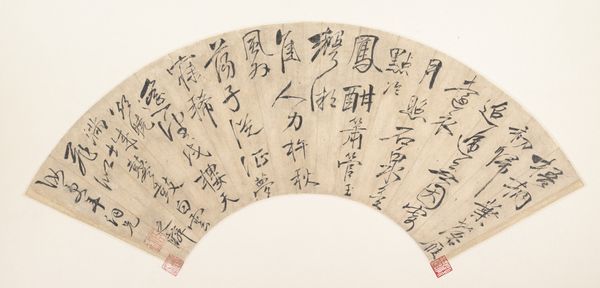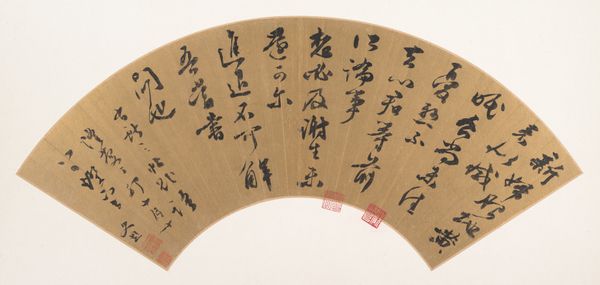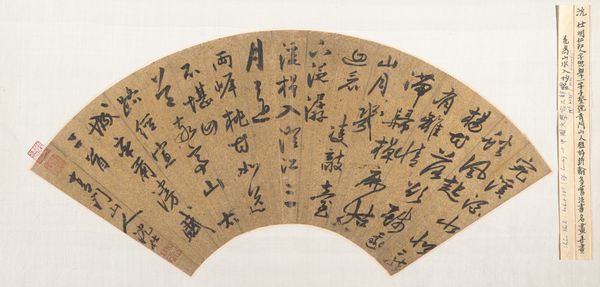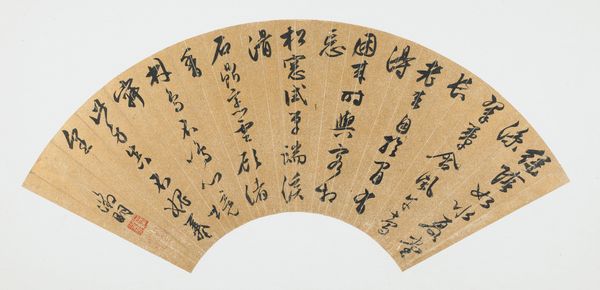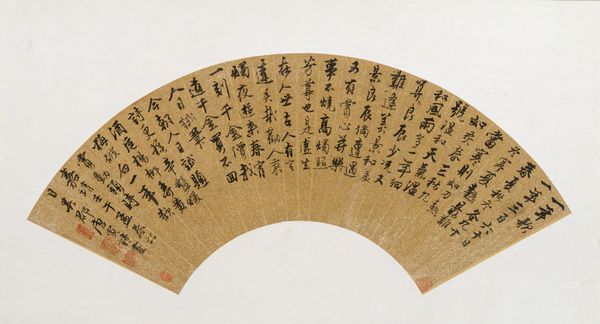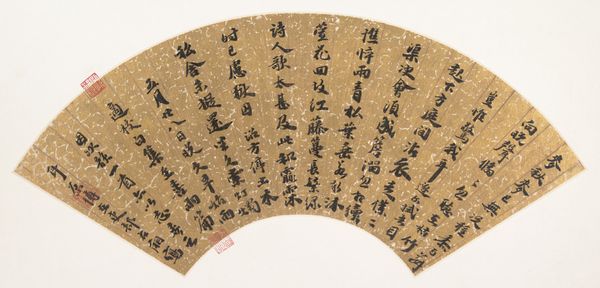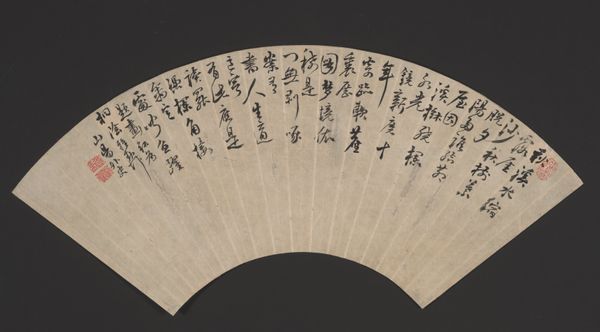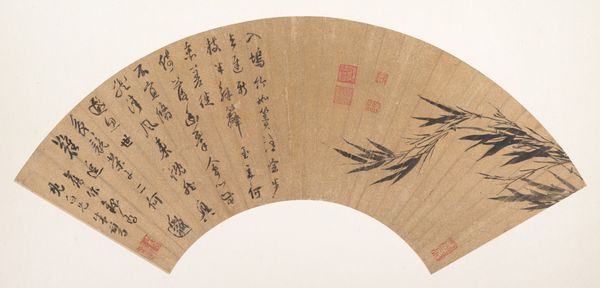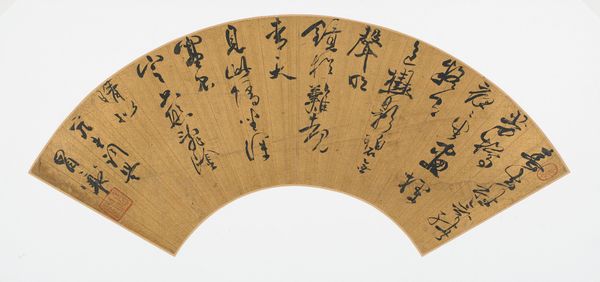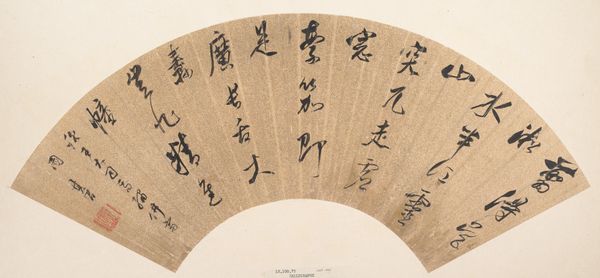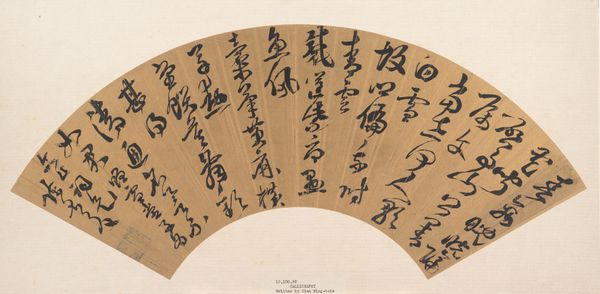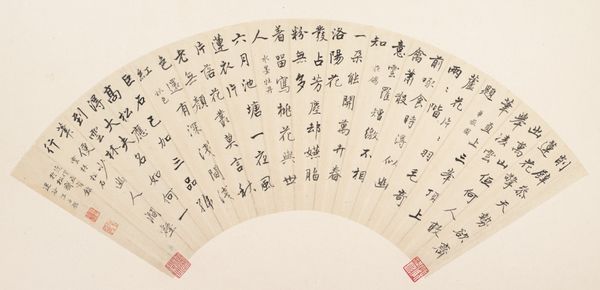
drawing, paper, ink
#
drawing
#
asian-art
#
paper
#
ink
#
orientalism
#
calligraphy
Dimensions: 7 1/8 x 20 1/4 in. (18.1 x 51.4 cm)
Copyright: Public Domain
Curator: Well, I'm immediately struck by its quiet grace. The way the ink seems to dance on the paper. There's such intentionality in every stroke. Editor: Indeed. This piece, entitled "Poem to Xu Qianzhi," comes to us from Wang Zhideng, who lived from 1535 to 1612. It's a drawing created with ink on paper, currently held in the Metropolitan Museum of Art. Curator: Oh, it’s on paper? It has such a fragile, almost ephemeral quality, like a thought whispered on the wind. The fan shape adds to that, doesn’t it? Suggesting movement and transience. Editor: Precisely. The fan shape in calligraphy represents an intimacy, almost like a secret shared. You see, the symbolic weight here comes from the integration of form and text. Wang Zhideng isn't merely writing a poem; he's encapsulating a specific mood or moment related to the recipient, Xu Qianzhi. Calligraphy, beyond its literal message, acts as an icon—reflecting tradition, skill, and personal connection. Curator: That’s really beautiful. And the script itself – how would you describe it? To me, it seems both disciplined and spontaneous. It breathes! Editor: It's an exquisite example of running script, where characters flow together. The ink varies in tone, some strokes are deliberate, firm, while others trail off, airy and light. Those red seals too serve as small monuments declaring artistic integrity, affirming authorship and marking different moments in the work's history. They create a kind of visual counterpoint to the dominant black ink. Curator: Almost like breaths held and released. Now I see them, it looks very deliberate. Editor: Exactly. It's this duality that imbues the work with such depth. Even though the exact nuances might be lost on modern viewers who can't read the poem, we still recognize its emotional intention. That elegance survives the centuries, a whisper that still speaks. Curator: Thinking about what survives... there's a certain universality to the feeling here. Loneliness? Peace? I see how symbolism acts as an activator for deeper connections, allowing the soul of the artwork to breathe across cultural boundaries. Editor: A quiet connection, indeed. Maybe we all seek solace in a poem, no matter how time shifts under our feet.
Comments
No comments
Be the first to comment and join the conversation on the ultimate creative platform.
